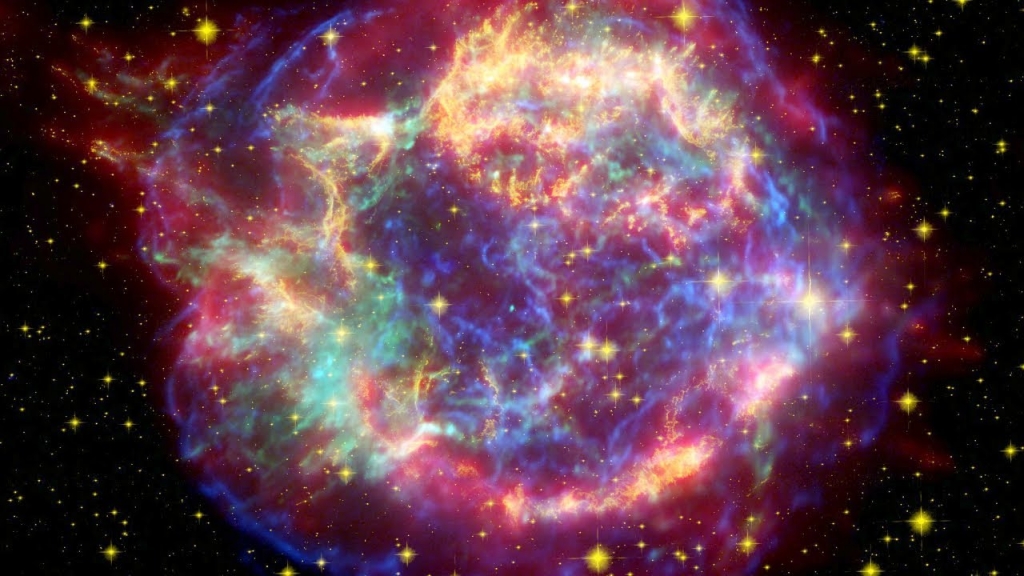-
Tips for becoming a good boxer - November 6, 2020
-
7 expert tips for making your hens night a memorable one - November 6, 2020
-
5 reasons to host your Christmas party on a cruise boat - November 6, 2020
-
What to do when you’re charged with a crime - November 6, 2020
-
Should you get one or multiple dogs? Here’s all you need to know - November 3, 2020
-
A Guide: How to Build Your Very Own Magic Mirror - February 14, 2019
-
Our Top Inspirational Baseball Stars - November 24, 2018
-
Five Tech Tools That Will Help You Turn Your Blog into a Business - November 24, 2018
-
How to Indulge on Vacation without Expanding Your Waist - November 9, 2018
-
5 Strategies for Businesses to Appeal to Today’s Increasingly Mobile-Crazed Customers - November 9, 2018
Radioactive fallout from a huge space explosion has been discovered on Earth
Artist’s impression of a supernova.
Advertisement
The scientists discovered iron-60, which is produced at the core of large stars and supernovae (exploding stars), in sediment and crust samples taken from the Pacific, Atlantic, and Indian Oceans.
The scientists discovered presence of iron-60 in two spans, from 8.7 million to 6.5 million years ago and from 3.2 million to 1.7 million years ago.
The researchers focused on the origin of iron-60 in deep-sea rock that likely came from one or more supernovas 195 to 425 light-years from Earth about 2.2 million years ago.
Anton Wallner, a nuclear physicist at ANU’s Research School of Physics and Engineering, led the research. Brian Fields, a professor and the department chair of astronomy at the University of IL, is an expert on near-Earth supernovas and their detection. Around 2.6 million years ago, the Earth entered a period of repeated glaciations known as the Pleistocene epoch.
They determined the age of the cores from the decay of other radioactive isotopes – aluminium-26 and beryllium-10 – using AMS (accelerator mass spectrometry) facilities in Germany, Japan and Austria.
Two new studies show a connection between radioactive particles on Earth’s seabed and several ancient supernovae located hundreds of light-years away.
The supernovae would have been as bright as the full moon, and could have been seen during the day, the researchers say.
In a second Nature paper, a team led by Dieter Breitschwerdt of the Technical University of Berlin, used a novel astronomical approach to help nail down the source of the exploding stars. The two explosions that were described in this week’s findings are outside of this “kill zone” but still close enough to have showered material on Earth. Mellott and other astronomers suspect that nearby supernovae can affect Earth’s climate in a number of ways, most importantly by burning up our ozone layer.
According to the dating, the fallout occurred over two periods – from 3.2 to 1.7 million years ago and eight million years ago. “There have been a lot of mass extinctions, but at this point we don’t have enough information to tease out the role of supernovae in them”.
Specifically, his team calculated how much iron-60 those supernovae would have sprayed into space – and how much the Earth could have swept up, based on the Solar System’s path as it orbits around the Milky Way.
The radioactive debris fell on our planet over a period of about 1.5 million years, suggesting there were a series of supernovae (the plural of “supernova” is either “supernovas” or “supernovae”).
The authors of the first study noted that “the older event coincides with a strong increase in 3He and temperature change at about 8 [million years] ago, while the more recent activity starting about 3 [million years] ago and occurred at the same time as Earth’s temperature started to decrease during the Plio-Pleistocene transition”. They believe that the source of the iron-60 was an aging star cluster that has since drifted away from our solar system – a cluster which no longer contains any massive stars, as they all likely already exploded as supernovae.
If a supernova takes place within 30 light years of our planet, the event could result in a mass extinction on Earth. One theory is cosmic rays bombarded our atmosphere, exciting atoms and jostling electrons around, which increased cloud cover and lightning.
“We find, which is very nice, that we get a peak of enhancement of iron-60 at around 2.2 million years ago”, he told Mashable following the publication of their research. In this case, they were too far away to cause such destruction.
Advertisement
Now that the cosmic dust has been analyzed, scientists plan to see if the explosions had any effect on Earth’s developing life.




























